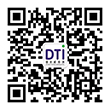What is the EU children's toy safety standard EN71
Date:2025-07-02 10:04:56 Classification
:【question】 Visits:
EN71 EU Children's Toy Safety Standard, EN71 is a series of standards formulated by the EU for children's toy safety, aiming to ensure that the physical, mechanical and chemical properties of toys meet specific safety requirements to reduce or avoid harm to children caused by toys. These standards are formulated by the European Committee for Standardization (CEN) and apply to all toy products sold in the EU market.
1. Standard Content
The EN71 series of standards involves various indicators related to toy safety and environmental protection, and covers most types of toy products. Specifically, it includes the following 11 categories:
1. EN71-1: Physical and mechanical tests - including drop tests, small parts tests, etc., to ensure the structural stability and safety of toys.
2. EN71-2: Flammability test - specifies the types of flammable materials prohibited in toys and the combustion performance requirements to prevent fire risks.
3. EN71-3: Toxic metal migration test - mainly for the limit requirements of migratable elements in accessible parts or materials to protect children from harmful substances.
4. EN71-4: Chemical Experiment Toys - Safety requirements for chemical experiment toys.
5. EN71-5: Non-experimental chemical toys - Safety requirements for non-experimental chemical toys.
6. EN71-6: Age warning label diagram - Specifies the age warning label requirements for toys.
7. EN71-7: Paint and coating requirements - Safety requirements for toy paint and coatings.
8. EN71-8: Swing, slide and similar toys for indoor and outdoor family entertainment - Safety requirements for such toys.
9. EN71-9: General requirements for organic compounds in toys - Safety requirements for organic compounds in toys.
10. EN71-10: Sample preparation and extraction of organic compounds - Sample preparation and extraction methods for organic compounds.
11. EN71-11: Analytical methods for organic compounds - Analytical methods for organic compounds.
2. Key Standards
- EN71-3:2013 - As the chemical harmonization standard of the new EU Toy Directive (2009/48/EC), EN71-3:2013 came into effect on July 20, 2013. The standard divides toy materials into three categories according to the degree of possible ingestion by children. It should be noted that in EN71-3:2013, the migration limit of hexavalent chromium in Category 1 and Category 2 toy materials is too low to be detected by the test method of EN71-3:2013, and its compliance requirements must be proved by other methods. In addition, EN71-3:2013 deletes the application of analytical correction factors.
3. Certification Process
1. Fill in the certification application form - provide necessary samples and product instructions, bill of materials and other information.
2. The samples are sent to the certification laboratory for testing - the test content is determined according to the product characteristics and relevant standards.
3. After the test is completed - the certification body will issue a test report and CE certificate.
4. After the product obtains the CE mark - it can be sold in the EU market.
IV. Certification validity period
Manufacturers need to ensure continuous compliance with the requirements of the EN71 standard and update or retest when necessary.
EN71 certification can ensure that toy products meet safety standards when entering the European market, reducing or avoiding harm to children. Manufacturers must be responsible for the safety of their products to protect children from potential dangers.




 Shen Gongwang Security: 44030602006947
Shen Gongwang Security: 44030602006947